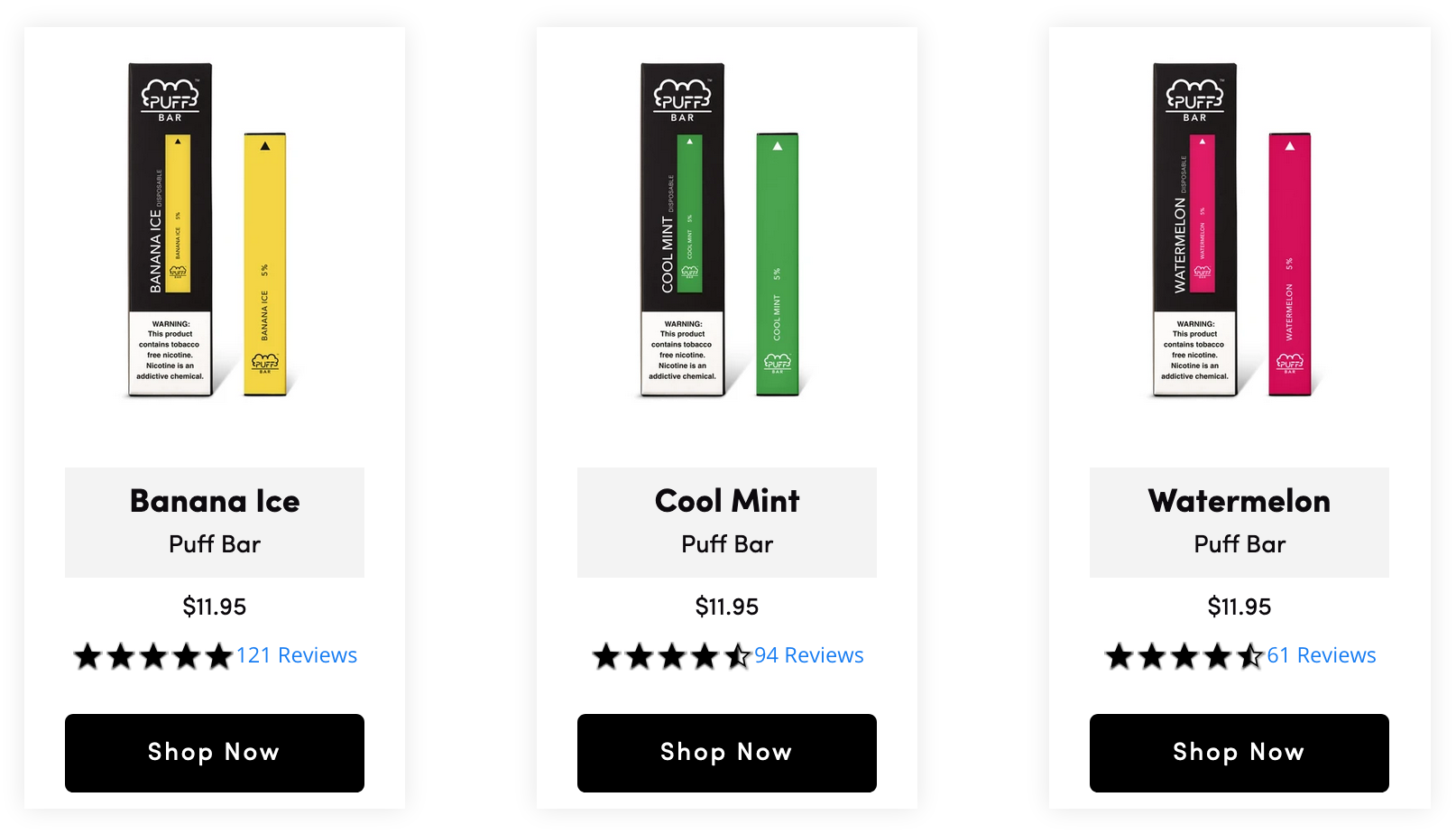
Puff Bar Flavors Resurface Following FDA Ban
FDA says it is aware of the situation but declined to comment on the regulatory status of disposable e-cigarette brand.
All the cool kids are doing it, but are e-cigs a less harmful alternative or just a new way to get addicted to nicotine?
Is “take back your freedom” a misleading slogan for an addictive product? Same question for an ad that hammers home the words “free,” “independence,” and “freedom of choice” while selling a nicotine delivery system. How can companies responsibly advertise a product that hooks its users, may be dangerous, and is supposed to mimic another product we’ve spent the last half-century deglamorizing?
What’s the deal with e-cigarettes ads? And, more importantly, what is an “asstray,” as Stephen Dorff says in the above commercial?
What are e-cigarettes?
E-cigarettes are a delivery system for nicotine-laced water vapor. Unlike traditional cigarettes, there is no tobacco, no burning, no smoke, and no ash. Instead, a battery-powered vaporizer heats up a small container of nicotine-laced water, creating a vapor the user inhales. The experience is supposed to recreate the act of smoking, and many of the more popular brands of e-cigarettes are shaped to look like a cigarette, complete with a LED light on the end that glows when a user inhales.
Are they safe?
No one knows. It seems likely that e-cigarettes are in some ways less harmful than regular cigarettes. Breathing in any kind of smoke is bad for your health, and cigarettes, which eventually kill half of smokers, are particularly harmful because of all the cancer-causing agents in tobacco smoke. E-cigarettes swap out the actual smoke for nicotine-rich water vapor. And while nicotine is the highly addictive component that keeps cigarette smokers hooked and inhaling all the bad stuff, nicotine itself may be less harmful on its own.
Health advocates, though, have expressed worries that e-cigarettes may be harmful in other ways. Most e-cigarettes are made in China and many are not rigorously tested for quality. So some e-cigarette users are heating up nicotine water with lower quality metal and then putting into their bodies the resulting vapor, which may be loaded with harmful vaporized metals and chemicals. This may not be the best idea, particularly as there are no long-term studies whether this sort of thing is harmful.
How are they marketed?
Very, very carefully. E-cigarette companies are avoiding health claims and smoking-secession claims, either of which would invite an FDA crackdown. The television ads produced by e-cig makers Blu and Fin only promote the lack of smoke-smell and ash — see this ad starring Jenny McCarthy — while making no mention of any potential health benefits.
E-cig companies are also being careful to avoid targeting children. The ads note the products are not for sale to minors, and NJOY’s website sussed out our attempts to order free e-cigs under a false identity.
But, and it’s a big but, a self-imposed ban on marketing to kids hasn’t stopped some companies from developing e-cig cartridge flavors like gummy bear and cookies and cream. E-cigarette use, in fact, has doubled among children between 2011 and 2012 and health officials are concerned e-cigs could be a gateway to traditional cigarettes.
Avoiding health claims and kids, e-cig ads instead play up the “cool” and “freedom” aspects of the product. Slow motion shots of celebrities exhaling vapor are supposed to make nicotine fog and LED lights seem as cool as the smoke and flame of real cigarettes, sans the smell and ash. A New York Magazine article noted that e-cig makers couldn’t get anyone to buy their products until, aided by heavy market research, they figured out how to make them seem cool. (A lot of vapor, apparently, was what made e-cigs look cool.)
How about those “freedom” claims?
Freedom in the sense of being able to vaporize nicotine water indoors? Sure. The freedom to stop smoking e-cigarettes whenever you want? Maybe not so much. Nicotine is one of the easiest drugs to become addicted to, with about a third of people who try it becoming addicted, and it’s one of the toughest addictions to kick, with 85 percent of smokers who try to quit on their own relapsing. E-cigarettes may be less harmful than their tobacco cousins, but that doesn’t mean they’re free of risks.
Should I believe the ads?
E-cigs are unregulated and mostly untested and contain perhaps the most addictive substance on the planet. Consumers should think very carefully before picking up an e-cigarette.
What about the asstray thing in that video? It sounds like Stephen Dorff says he’s sick of being a “walking asstray.”
We think he meant to say ashtray, though we have so many unanswered questions about what an asstray might be.
Click here to read TINA.org’s investigation of emerging misleading marketing tactics within the e-cigarette industry.
FDA says it is aware of the situation but declined to comment on the regulatory status of disposable e-cigarette brand.
TINA.org agrees with health groups that Juul’s current campaign disseminates an illegal smoking cessation claim.
FDA to consider legal pathways for cannabis-derived compound.


